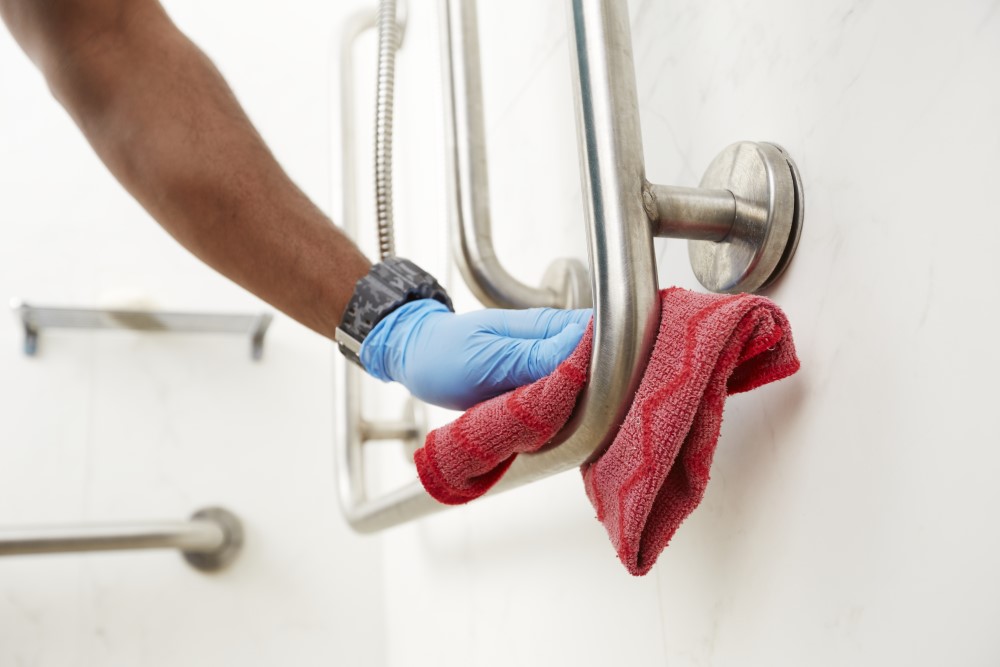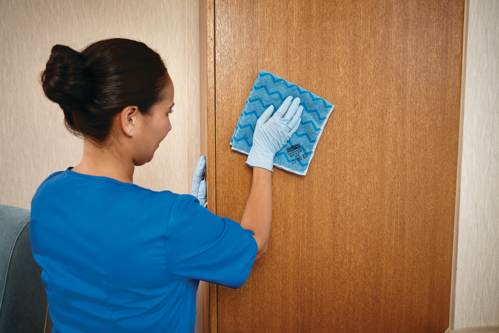
The COVID-19 pandemic has changed the way we think about cleaning and touching surfaces altogether. Not only is it important to be mindful of where your hands have been and how it contributes to your own hygiene and health, but finding good quality products to support effective cleaning habits has become a critical staple in stopping the potential spread of the coronavirus.
With workers expected to get back to "normal" and return to offices now, according to The Age, commercial cleaning efforts must be at top of mind for owners and operators of businesses, care facilities and other highly frequented public places that will become an art of the average Australian's regular agenda once again.
But cleaning and disinfecting surfaces doesn't always have to involve harsh chemicals, traditional cotton cloths and wasteful products. Microfibre material creates high quality cloths that use an effective technology that's designed to clean surfaces in a more efficient, economic and environmentally friendly fashion.
But are all microfibre cloths the same? Let's dive into the benefits of utilising microfibre technology and the difference between products:
What are the benefits of using microfibre cloths?
Microfibre material is beneficial for many reasons. Some of those include:

Are all microfibre cloths the same?
In short, the answer is no.
The term microfibre refers to the small fibres that are made up of polyester, nylon, or a combination of the two fibers. Each fibre is knit into a waffle weave that is designed to work with the other surrounding fibres to trap the smallest particles. This is considered a more effective solution than grouping larger fibres together to complete the same job.
To determine the difference between microfibre cloths, asking the following questions can help determine the standard for finding the higher quality product:
Research and testing methods can help you determine which microfibre cloths meet your quality standards.
As previously mentioned, not all microfibre cloths are created equal. Some of the main differences you'll find in different types of microfibre include:
What makes Rubbermaid microfibre superior?
Preventing the spread of infection and disease starts with microbe removal. Rubbermaid HYGEN™ microfibre cloths are designed to remove 99.9% of microbes including C. diff, with water alone, and also remove 99.99% of human coronavirus OC43.
Not only are the products designed with superior cleaning coverage performance in mind, but they're also compatible with some of the most common disinfectants, such as Quat, Chlorine Bleach and Hydrogen Peroxide. We even offer microfibre cloths in different colors to reduce the risk of cross contamination so you know exactly which cloth to use for each cleaning job.
Rubbermaid creates commercial products that are designed with durability and effectiveness in mind. With HYGEN microfibre, workers in healthcare and hospitality environments can clean with the peace of mind that everyday pathogens and those associated with COVID-19 are removed and taken care of. To learn more about HYGEN quality microfibre and our other effective cleaning products, browse through our catalogue today.